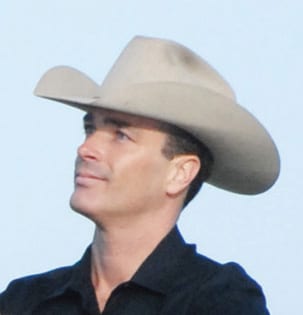It’s no secret that the halter horse industry has faced its share of adversity over the past decade – HYPP, class entries and the soft sale market are clear indicators that the industry is ripe for self-evaluation.
According to AQHA Judge and multiple World Champion halter exhibitor and trainer Clint Fullerton, in the halter horse world today, the largest public relations nightmare is the catch lead.
GoHorseShow.com reviewed the results of the 2007 AQHA World Championship Show and found that in the 15 Open Halter classes (not including Performance Halter):
- 2 exhibitors won 40% of the trophies awarded
- 3 exhibitors won 51% of the trophies awarded
- 5 exhibitors won 64.4% of the trophies awarded
These statistics clearly indicate that Fullerton may be on to something – a small handful of the open halter exhibitors are in the top-3, and in many cases, are not the trainers of record, but rather guns for hire. Does this hurt the industry and if so, what do we do about it? Fullerton provides his perspective.
THE CATCH LEAD by Clint Fullerton
Every successful industry is based upon a product that people want, industry reputation and the successful marketing of that product. Public relations are always a key to success. An industry’s reputation doesn’t necessarily revolve around reality but the perception of reality. In the halter horse world, the largest public relations nightmare is the catch lead.
CATCH LEADING LEAVES THE IMPRESSION OF “POLITICS”
When people attend horse shows, see a horse shown all year, know where that horse is consistently placing against a group of horses in that class and then see a catch lead change the placing dramatically, it is interpreted as politics. While those of us on the professional side know that it is probably the only time that the horse has been shown to its best advantage, the general population sees it as politics and starts questioning why they should be involved in an industry that is so obviously fixed.
Example: In Denison, Iowa over Memorial Day weekend a young trainer takes four horses to the horse show. One of these horses is a two year old mare that has been showing successfully all year against a mare that has consistently been thirds and fourths. The first day, the mare he has been showing against is fourth. The second day the competitor hires a big name catch lead and the mare is first and grand champion. How does this young trainer explain the difference in placing to his client? What was the perception by the crowd in the stands?
Result: The client did not send his horses to attend the Iowa Seven Day Run in Des Moines, Iowa one week later. A show that is thirty minutes from his house.
The only way to bring new client’s into our industry and keep the ones that we already have, is to create the atmosphere and deliver on the promise that if they commit to a program, invest properly and continue their education they will see fair results. Why would a client need to invest in your program or purchase the correct horse when they can get an award, prestige and points for the low cost of a catch lead?
CATCH LEADING DISCOURAGES YOUNG PROFESSIONALS FROM CHOOSING OUR INDUSTRY
Any business needs new people coming into it and that includes young trainers in our industry. A young trainer brings with them new ideas and fresh clients that expand our markets. Today our young trainers are convinced that there is no room at the top. If they do get a client to invest in a great horse, they will do all of the work but at a World Championship Show will need to give up the lead. The young trainer is left discouraged and wonders why they work as hard as they do for as little money for someone else to take the shank.
Example: A young Paint Horse trainer came into the business a couple of years ago with a zest for the industry. His enthusiasm was contagious and he soon developed a clientele that bought several nice horses for him to show. All year long this trainer was successful, until it came to the World Championship Show. The owners and trainers of horses that he had defeated in competition all year long were now hiring big name catch leads and the tables were being turned. His client’s, being reasonable people, knew that if they hired a catch leader they would have a better chance as well. Is he suppose to lie to his client’s and tell them they wouldn’t have a better chance with a big name catch leader? Is he wrong to think that he did the work and should reap the reward?
Result: Four weeks ago this young trainer quit the business to become a sales representative for a paint company. An industry that promises that if he works hard he will be promoted. How does a young trainer today know that if he/she works hard that they will receive an opportunity? The feeling is that our industry doesn’t promote fair practices.
CATCH LEADING IS UNFAIR TO EXISTING CLIENTS
A loyal client is the goal of every business. When a client becomes a part of trainer’s program they are investing in that program and become a part of that team. A trainer’s talent and hard work coupled with the client’s horse, investment and advertisement is the formula for success that makes the big name trainer a big name trainer. A successful trainer’s name is their business, their brand a representation of what their program stands for and represents.
Is it fair to let someone else rent that name for pennies, and I do mean pennies, on the dollar? Isn’t it true, “you can only go to the well so many times?” Should your client’s chances be compromised because you catch lead a horse before showing theirs, that has been in your program?
I have never seen The Jones Store rent Wal-Mart their name for an afternoon to boost sales. We are the only industry that engages in this self destructive practice.
THE REALITY
The reality is that the catch lead is income, that has been used to supplement the losses trainers are experiencing due to the ever shrinking pool of business within our industry. This is viewed as “free money” that can be made to take care of farm payments, truck payments, taxes, etc. Ironically the catch lead is used as catch up money.
Gone are the days of separation in the halter horse industry between the Quarter Horse, Paint Horse, Pinto Horse, Palomino Horse and Appaloosa Horse. These factions are now interchangeable with their clients and trainers. If every trainer shows only the horses in their program there will be more room for more trainers, which is more clients, which is more horses being sold, which is more horses being bred, etc. etc. If a trainer has more than one two year old mare they would hire a young assistant, teach that person and give them the opportunity to show. That is opportunity. This is the reality we need to be involved with.
THE SOLUTION
The future success of the halter horse industry is going to be based partially on our ability to “self regulate”. We need a professional code of ethics, much like the mission statement, which includes a proclamation that trainers sign that states “We will not catch lead.”
By giving up the catch lead we will be trading shortsightedness for future growth. Industry stabilization, market expansion and a sound public image await this change. I believe that by doing so, AQHA, APHA, PtHA, PHBA and ApHC will see that we are dedicated to the revitalization of our industry.
About The Author
AQHA Judge Clint Fullerton has shown, trained and coached the winners of 111 World and Reserve World Championships, to date, in five breed registration associations.
Clint offers showing, training, stallion management, breeding and the marketing of world class Paint and Quarter horses. Devotion to the horse and dedication to the client set Team Fullerton apart, and have made it an industry leader.
The Clint Fullerton training division is located near Kansas City, Missouri, just outside of the small town of Odessa. The Breeding Division is located in the heart of horse country just outside the historic town of Harrodsburg, Kentucky. Go to www.Fullertonmanagement.com to learn more.









